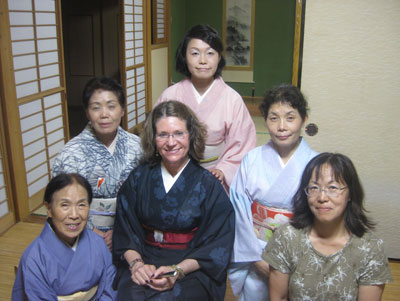Tips for communicating in Japan
Awaiting takeoff from Los Angeles to Tokyo, the Japanese flight attendant asked, “Ma’am, have you already had a chance to buckle your seat belt?” This question, presented as a pleasant request, intrigued me because an American attendant might say, “Please put on your seat belt so we can take off.”
I found many noteworthy differences between US and Japanese communication styles while on a 12-day trip to Japan, June 28-July 9, 2010.
In the US, we employ a direct style of verbal communication. Seldom do we speak neutrally, as the attendant did when, with a gentle hint, she allowed me to “save face” and do what I was supposed to have done earlier.
A soft voice breathed into the PA system, informing us of safety and emergency procedures. I was struck by how this intimate tone gained my trust.
Perusing the beverage menu, I noticed it stated, “We apologize if occasionally your choice is not available.” A US menu might not express such regret.
Upon arrival at my Tokyo hotel, the bellman swiftly carted my luggage up to my room, showed me how to locate English channels on the TV and then bowed deeply, as if he had nothing more important to do than make me feel special.
When I asked directions, I received an answer not with a sharp point of the finger but with an angled hand aimed at the route. Whether in a hotel, train station or store, attendants often accompanied me to ensure that I found my way.
In restaurants, instead of “Could I have more wasabi?” as it might be phrased in the US, I heard a patron say, “Perhaps there might be more wasabi?”
I spent time with a Japanese family. Upon presenting a T-shirt to the adolescent son, I sensed something amiss. The parents talked to him in a low pitch. “Everything is all right,” they assured me. Later I learned that another young man was the older brother, someone to whom I hadn’t presented a T-shirt. The parents had calmly diminished this faux pas, minimizing any uncertainty in the moment for everyone.
My experience validates what linguists and sociologists have said, that language conveys culture, which is embedded in all communication. Cultural differences manifest themselves in what we say, how we say it, when we say it and even if we say it.
American communication, goal-oriented and explicit, implies a relationship to time, and that time is usually “now.” When conversation wanes, we feel we must speak to fill the void, and our words represent our individual views. When the Japanese speak, they consider how their words reflect on family, ancestors and community.
The Japanese convey and interpret language not so much through words as through “context” — how the intent is presented, including tone and timing. Meanings are tacitly sensed through longstanding norms. Because the culture emphasizes politeness, tact, relationship-building and interdependence, Japanese people have difficulty saying “No.” They may say, “Hmmm, it could be difficult.”
In one study, Japanese mothers talking to their babies were found to focus on greetings, feelings and anticipated reactions. Conversely, American mothers concentrated on objects and possessions. This suggests that American children learn that the world is made up of objects, whereas Japanese children see a world of relationships. Some contend that the Japanese grow up “tuned in” to others.
Business presents particular hurdles. While Americans work from objectives and chatter freely with new acquaintances, the Japanese operate from shared principles with long-term associations. There is no hurry in decision making. A nod may not mean a deal but rather validation of the speaker. To an American, feeling left in limbo without an answer — as postponement might be interpreted — can be frustrating.
Nowhere have I found more gentle, sensitive and caring people than in Japan. While we Americans can’t be expected to pick up all the nuances in Japanese communication, we can avoid appearing declarative, brash and impatient. A few mild manners, a smile and gratitude will go a long way.
Here are a few reminders on communication in Japan.
- Avoid pointing. Use a wedged hand aimed in a direction.
- Keep your voice down. Americans tend to talk loudly and openly in hotel lobbies and restaurants and on buses.
- Present a request gently: “Perhaps you might know where I might find a restaurant.”
- Allow face-saving by never illuminating an error. Even suggestions must be presented carefully so as not to appear to be pointing out an omission someone committed.
- Avoid pressing for an answer. Americans ask direct questions and push for a response. With Japanese people, a response will come wrapped politely. Getting no answer or receiving one that appears noncommittal or “hedging” most likely means “No.”
- Know that bowing is an important communication ritual. Traditionally, the person of lesser social status bows lower, but even a small bow shows respect for the person and the culture.
KIMBERLY EDWARDS
Sacramento, CA

